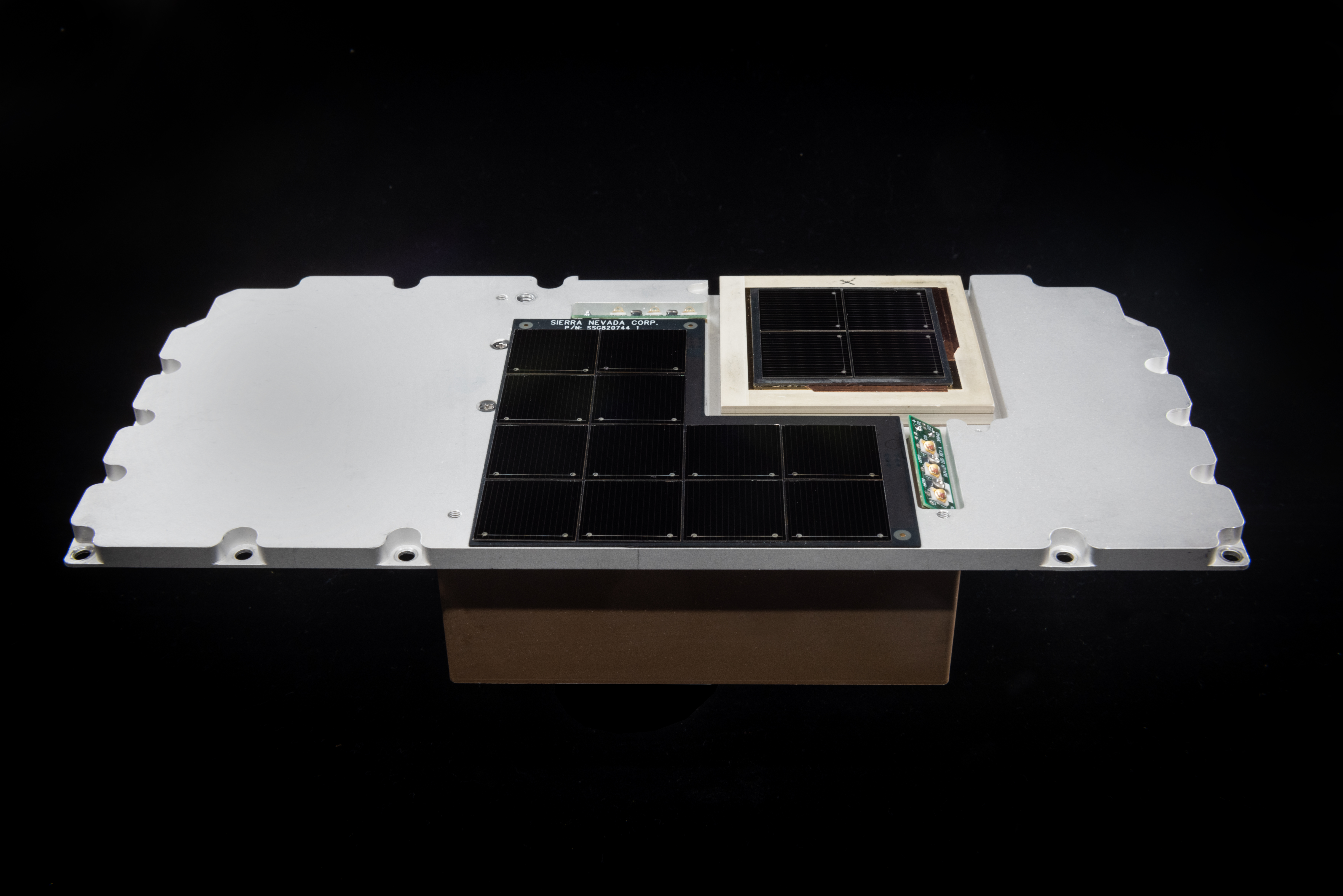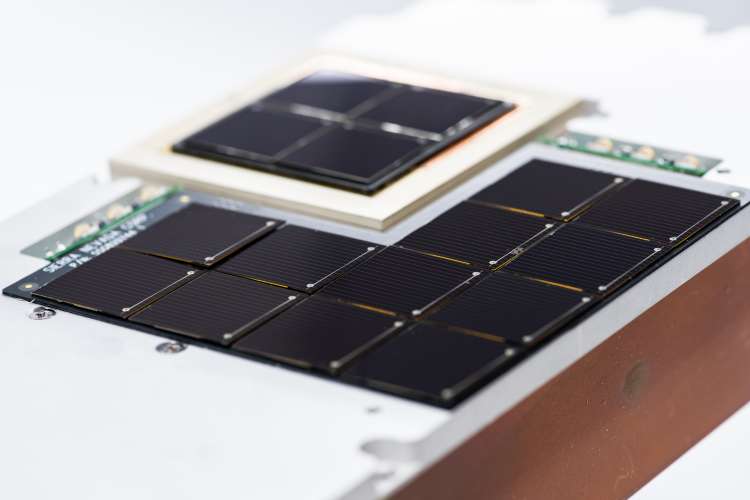Whether satellites are for space science, Earth observation or telecommunications, space-based infrastructure is constantly growing more sophisticated and capable of handling and communicating ever larger amounts of data. While increased access to space provides many benefits, proliferation can create its own challenges. The combined threat of space debris, space weather hazards, and accidental and malicious interference requires an aggressive approach to space situational awareness to secure our space infrastructure, and Blinker is designed to address that need.
Designed and built by The Aerospace Corporation, Blinker is a small, self-contained, low-cost transponder used for space traffic management. It is also remarkably self-sufficient: It is self-powered, uses on-board batteries to store energy collected from its solar panels, and requires no active connection with the main satellite bus. This autonomy allows the transponder to continue broadcasting GPS data, even after the spacecraft is decommissioned or experiences a critical systems failure. When proliferated to all space objects, Blinker can provide near real-time space situational awareness.
“Currently things in the sky are tracked by the space surveillance network, which uses radar and optical tracking of things and then compares their characteristics to entries in a database of similar items,” said Andrew Goodyear, Principal Investigator for Blinker. “However, using this method can create location errors on the order of hundreds of meters or even kilometers. With on-board GPS you can narrow that down to 30 meters or less, so it improves knowledge of where we are in space by an order of magnitude.”
Reduced Footprint, Increased Capabilities
Blinker advances better space traffic management by providing much more accurate object tracking in a fraction of the time. Launched on July 2, 2022, Blinker turned on as soon as sunlight illuminated its solar arrays and immediately began collecting GPS fixes. It has since achieved key milestones including demonstrating reliable GPS solutions at different cadences in response to the different satellite orientations which effect Blinker’s limited power budget. Also, the light emitting diodes on Blinker that are intended for visual acquisition with a small telescope were clearly identified blinking on and off as it passed over an observatory in Italy in a cooperative exercise with the Sapienza University of Rome.

Blinker’s diminutive profile required some astute design work to accommodate all needed functionality within a limited amount of space. For data transmission, Blinker required the development of a unique, low-profile antenna design capable of receiving GPS signals, as well as receiving and transmitting telemetry and control radio signals. The antenna’s clever design also provided a means of powering Blinker itself.
“Since real estate is at a premium on Blinker, solar cells were installed on the flat surface of the patch antenna to not waste that available space,” said David Hinkley, Senior Project Leader in the Mission Systems Engineering group in xLab. “To further maximize the potential of the limited space we had to work with, Blinker uses surface mount technology (SMT) solar cells from the Sierra Space Corporation that are 1.88cm x 1.88cm square, thus much smaller than typical 30% efficient solar cells.”
Blinker has been reliably sending GPS position fixes to the ground along with time and position dilution information daily for 9 months. More importantly, Blinker has advanced the concept of low-cost independent transponders, built with widely available, off-the-shelf components for integration in next-generation spacecraft.
“Blinker has demonstrated that we can build an autonomous transponder of reduced size, weight and power, and it doesn't have to be an expensive proposition. We’re hoping that if Blinker is visible enough to the space community, it’ll encourage more market participation to achieve lower cost, and even smaller size so that more satellite developers incorporate GPS transponders on their spacecraft,” said Goodyear. “This will help us address the ever-increasing challenges of space traffic management, and better prepared for the future of space situational awareness.”
Open Standards, Expedited Technology Development
Blinker was launched as a part of the Slingshot 1 mission and was one of the first payloads confirmed operational. Slingshot 1 is a 12-unit CubeSat demonstrating the feasibility of using open standards and non-proprietary interfaces to streamline the development and integration of a wide array of modular payloads with a broad range of capabilities.
In a space environment where agility is increasingly prioritized, Aerospace’s contributions to Blinker and other Slingshot payloads are proving that the simplification and fast-tracking of the payload development and integration process can facilitate the advancement of important technologies in the accelerated time frames required to keep pace with unprecedented growth in the space industry at large.








